A Comprehensive Guide to Vanity Side Light Fixtures
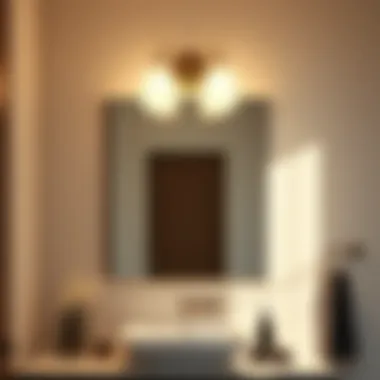

Intro
Vanity side light fixtures play a pivotal role in enhancing both functionality and aesthetics in modern bathrooms. While often overlooked, these fixtures illuminate critical areas, ensuring optimal lighting for daily grooming activities. Yet, their significance extends beyond mere practicality; they can elevate the overall ambiance of the space, transforming a standard bathroom into a stylish retreat. As we navigate through this comprehensive guide, we will dive into various aspects of vanity side light fixtures, exploring design trends, buying considerations, installation nuances, and maintenance tips. This endeavor aims to equip homeowners, designers, and DIY enthusiasts alike with the knowledge needed to make informed decisions when it comes to enhancing bathroom illumination and style.
Design Trends
Current Trends in Light Fixture Styles
The realm of lighting design is perpetually evolving, and vanity side light fixtures are no exception. Currently, there is a notable shift towards fixtures that boast a blend of functionality and artistic expression. Sleek, minimalist designs are widely popular, often featuring clean lines and geometric shapes. This trend aligns with the modern penchant for decluttering spaces. Additionally, industrial styles featuring brass or matte black finishes are gaining traction, adding a rugged charm to many contemporary bathrooms.
Another exciting direction lies in the embrace of smart technology. Smart vanity lights, which can be controlled via mobile apps or voice-activated systems, are increasingly sought after for their convenience and versatility. This tech-savvy trend caters to those who value both style and efficiency in their home environments.
When it comes to color, soft, warm tones remain a favorite, creating a cozy atmosphere that flickers gently against bathroom tiles and mirrors. One might also spot fixtures incorporating mixed metals – think brass and chrome. This eclectic approach allows homeowners to personalize their spaces with unique combinations that reflect individual tastes.
How to Incorporate Trends into Your Space
Incorporating the latest trends in vanity side light fixtures into your space can be as simple as following a few guidelines. Here are some suggestions:
- Match Styles with Existing Decor: Consider the aesthetics of your bathroom. If it leans towards modern style, opt for simple geometric shapes. On the other hand, traditional spaces may benefit from fixtures with ornate details. This will ensure harmony in design.
- Layer Your Lighting: Combine ambient lighting with task lighting for functional purposes. Using vanity side lights alongside overhead fixtures provides a balanced illumination that caters to various needs.
- Utilize Mirrors Wisely: Positioning side lights close to mirrors can significantly enhance brightness without creating harsh shadows. This placement is particularly beneficial for makeup application or shaving.
- Explore Finishes: When selecting your vanity light, consider the finish. Polished nickel may suit a sleek, contemporary bathroom, while oil-rubbed bronze can create warmth in a rustic setting.
Knowing your style and embracing the latest in design trends doesn’t just elevate the appeal of your bathroom; it adds a touch of personality that reflects who you are.
Ultimately, integrating trendy fixtures while considering your personal taste will create a cohesive, inviting space. As we continue, the focus will turn to practical aspects, such as selection criteria for these crucial lighting components.
Understanding Vanity Side Light Fixtures
The focus on vanity side light fixtures is not just about embellishing a bathroom; it addresses significant concerns regarding functionality, ambience, and practicality. These fixtures illuminate vital areas, helping homeowners and designers alike to create spaces that look appealing while serving their intended purpose. Good lighting can change the entire mood of a room and influence how we perceive our daily routines.
The importance of choosing the right vanity side light fixtures can’t be overstated. They play a crucial role in enhancing bathroom aesthetics while serving to illuminate crucial spaces. Many people are unaware of how poor lighting can affect everything from getting ready in the morning to winding down in the evening.
Consider these key benefits and considerations:
- Enhanced Visibility: Vanity side lights provide focused illumination, which is essential for tasks like shaving or applying makeup. Without adequate light, even the best bathroom design can be rendered less effective.
- Aesthetic Appeal: These fixtures come in a range of styles. From elegant sconces to minimalist modern designs, they can cohesively tie the entire bathroom together, making it an inviting space.
- Balance and Proportion: Proper placement of side lights can offer a balanced look, preventing harsh shadows that typically occur with overhead lighting. Well-placed fixtures can enhance the proportion of mirrors and counters.
- Energy Efficiency: Modern options often incorporate LED technologies, which not only save money in electrical bills but also reduce the environmental footprint.
Focusing on these aspects when selecting and installing vanity side light fixtures can elevate the overall experience of a bathroom, making it more functional while contributing to the aesthetic appeal.
Definition and Purpose
Vanity side light fixtures are electric lighting devices typically installed on either side of a bathroom mirror. This approach ensures an even spread of light, curtailing the shadowy effects often observed when overhead lighting is the sole source of illumination. The primary purpose of these fixtures is to provide adequate lighting for grooming tasks, but they have evolved into important decorative elements.
In practical terms, side lights enhance not just visibility but offer a certain style to the bathroom. They can vary significantly in design, materials, and light intensity, each serving specific needs and preferences. Thus, understanding the purpose of these fixtures is essential for achieving the desired functionality and style in your bathroom space.
Historical Overview
The journey of vanity lighting fixtures can be traced back several centuries. Initially, bathrooms were not as prevalent in homes, but when they did emerge, they often featured simple candle sconces for light. These early designs were rudimentary, serving purely functional purposes and lacking any decorative flair.
As time progressed, especially in the late 19th and early 20th centuries, advancements in electrical lighting began to influence bathroom fixtures. The introduction of the electric bulb allowed for more elaborate designs. For instance, Edwardian and Victorian homes often incorporated ornate details in their lighting fixtures, reflecting the style of the era.
In more modern times, the rise of minimalism and functionality transformed how we view bathroom lighting. Now, with countless available designs, the focus has shifted toward blending utility with creativity. People are no longer merely seeking illumination; they want fixtures that complement their overall bathroom design. From streamlined designs in contemporary homes to vintage recreations in retro-themed spaces, vanity side light fixtures have indeed become integral to bathroom design philosophy.
Design and Aesthetics
When it comes to bathroom decor, the illumination style isn't just about lighting—it's also a fitting catalyst for elevating the room's overall design aesthetic. Vanity side light fixtures serve as both a utility and a visual statement, drawing the eye while providing essential light in areas of grooming and preparation. The impact of these fixtures extends beyond their functionality.
Influence on Bathroom Style
Decisions regarding vanity side lights significantly shape the ambiance of the bathroom. Think of this space as a personal retreat where the right light can set the mood for a relaxing bath or energizing while getting ready for the day. A chic light fixture can often be the cherry on top of a carefully curated design. Whether adopting a modern vibe with sleek lines or channeling a vintage charm with ornate styles, the right fixture can complement the vanity or stand out as a focal point.
Moreover, aesthetics can be enhanced by integrating fixtures that resonate with the underlying theme of the bathroom. Traditional lights may clash in a contemporary setting, while minimalist fixtures can feel out of place in a rustic-themed room. Understanding these nuances allows for a more holistic approach to bathroom design.
Materials and Finishes
Diving deeper into the specifics, the choice of materials and finishes can drastically alter the appearance and feel of the fixtures. From metals to glass and woods, every material brings something unique to the table.

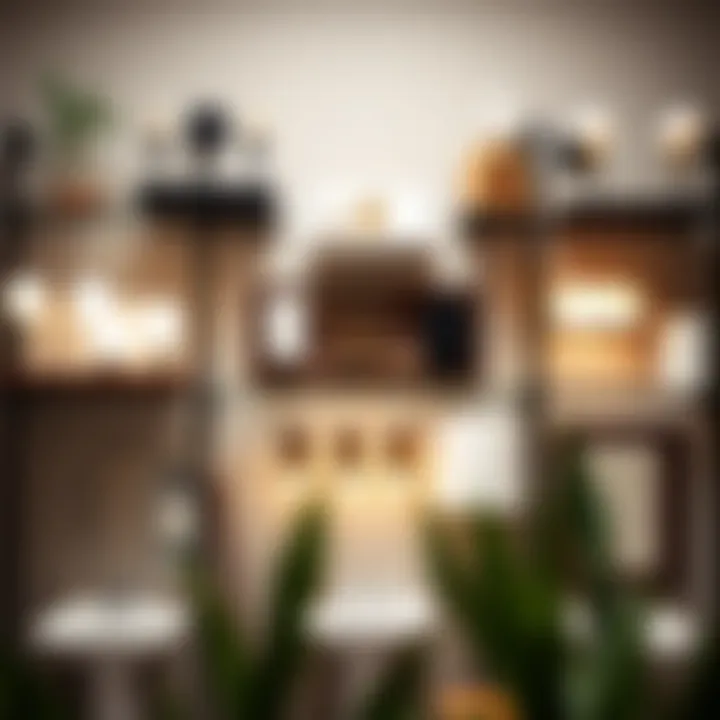
Metal Options
When discussing metal options, brass and brushed nickel are at the forefront. Brass shines with a warm glow and often conveys an antique vibe, which pairs beautifully in more traditional settings. It is durable and relatively low-maintenance, though it does require occasional polishing to maintain that luster. On the other hand, brushed nickel offers a more modern appeal. Its subtle, muted sheen is perfect for those looking to avoid anything too flashy.
Key characteristic: Durability and adaptability.
Unique features: Metals such as stainless steel resist rust and tarnishing, which is a boon in a moisture-laden environment. However, they may lack the warmth compared to other options.
Glass Elements
Glass elements in vanity fixtures can range from clear to colored, impacting both brightness and style. Frosted glass diffuses light softly, reducing glare and providing an inviting atmosphere. Clear glass, conversely, is excellent for achieving a bright, airy feel, especially when paired with vibrant bulbs.
Key characteristic: Versatility and aesthetic appeal.
Unique features: Beyond looks, glass can be molded into creative shapes, making it adaptable to various decor styles. A disadvantage is that it can show smudges, necessitating more frequent cleaning.
Wood Accents
Incorporating wood accents can add a natural touch, creating warmth and balance within the space. Options like teak or oak can contribute to a cozy environment, especially in bathrooms designed with a biophilic approach. These fixtures often meld beautifully with other natural materials, making them a hit in organic-themed designs.
Key characteristic: Warmth and organic appeal.
Unique features: Wood can absorb moisture, so treatments are essential to maintain durability. The trade-off is a visually stunning piece that also harmonizes with nature-inspired themes.
Color Schemes
The colors chosen for vanity fixtures play a crucial role in enhancing bathroom aesthetics. Pure white elements can create a clean and fresh look, while darker hues instill a sense of drama.
Coordinating color schemes with other bathroom features, such as tile or cabinetry, can yield a more cohesive design. For instance, gold-toned fixtures pair elegantly with navy or emerald greens, establishing a luxe feel. Experimenting with color can redefine the room, turning a mundane space into a breathtaking one.
- Monochrome: Using a single color but in various shades can add depth without discomfort.
- Contrasting: Pairing unexpected colors might evoke creativity and a bold vibe.
Ultimately, a thoughtful approach to design and aesthetics in bathroom lighting is about creating a harmonious blend between function and style.
"Good design is as little design as possible."
This philosophy applies not just to fixtures, but the entire space. By deftly balancing function and flair, homeowners can craft a sanctuary that is both beautiful and practical.
Types of Vanity Side Light Fixtures
Understanding the various types of vanity side light fixtures is crucial for anyone looking to enhance their bathroom space functionally and aesthetically. The right choice of fixtures not only illuminates the area around the vanity but also contributes to the overall design theme of the bathroom. Selecting the ideal type can make the difference between a sterile washroom and a warm, inviting environment.
Wall-Mounted Fixtures
Wall-mounted fixtures have long been a staple in the world of bathroom lighting. These fixtures are typically placed on either side of a mirror, providing symmetrical lighting that helps to eliminate shadows on the face—a vital consideration for daily grooming routines. The height and distance from the mirror play a significant role in how effectively these fixtures illuminate the user’s reflection.
- Benefits:
- Efficiency: Wall-mounted lights can spotlight specific areas.
- Design Flexibility: They can be found in various styles from modern to vintage, fitting into almost any décor.
- Space-Saving: Ideal for compact bathrooms where space is at a premium.
In terms of designs, you might notice a vast array of shapes—from linear fixtures that stretch horizontally to quaint, rounded designs that offer a softer touch. Copper or brushed nickel materials give a contemporary feel and blend well with most color palettes.
Sconce Variations
Sconces are another popular choice in vanity lighting. These fixtures often come with individual arms that allow for adjustable angles, giving users the power to direct light exactly where it’s needed most. Sconces can add a touch of elegance or even a bit of drama, depending on how they are designed and installed. They serve as standout pieces in the bathroom, going beyond mere functionality.
- Variety of Styles: Traditional, contemporary, nautical—you name it, there’s a sconce style for it.
- Layered Lighting: When used in conjunction with other lighting options like overhead fixtures, sconces can help create a well-rounded lighting scheme.
- Occasional Bulb Options: Depending on the design, you might find sconces that take on globe bulbs, vintage Edison bulbs, or brighter LED options, making it easy to achieve the right ambiance.
Integrated Lighting Solutions
Integrated lighting solutions are a more modern approach to vanity lighting. Here, the lights are embedded within cabinetry or mirrors. This type provides clean lines and a seamless look, making it especially favorable in contemporary or minimalist bathrooms. While integrated lighting can be less adjustable than the traditional methods, they offer a sleek, sophisticated appearance.
- Space-Efficient: Integrated options are perfect for smaller bathrooms, conserving wall space.
- Innovative Designs: Many versions feature touch-sensitive controls or even color-changing LEDs, catering to various moods or preferences.
- Safety Features: Often, these solutions come equipped with features that minimize glare and provide even lighting, enhancing usability.
Choosing among these fixture types should align with both personal taste and the overall design theme of the bathroom. Proper lighting enhances the atmosphere, showcasing the chosen materials and décor, ultimately elevating the space into a more functional and visually appealing sanctuary.
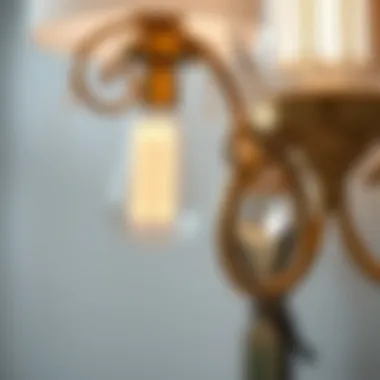
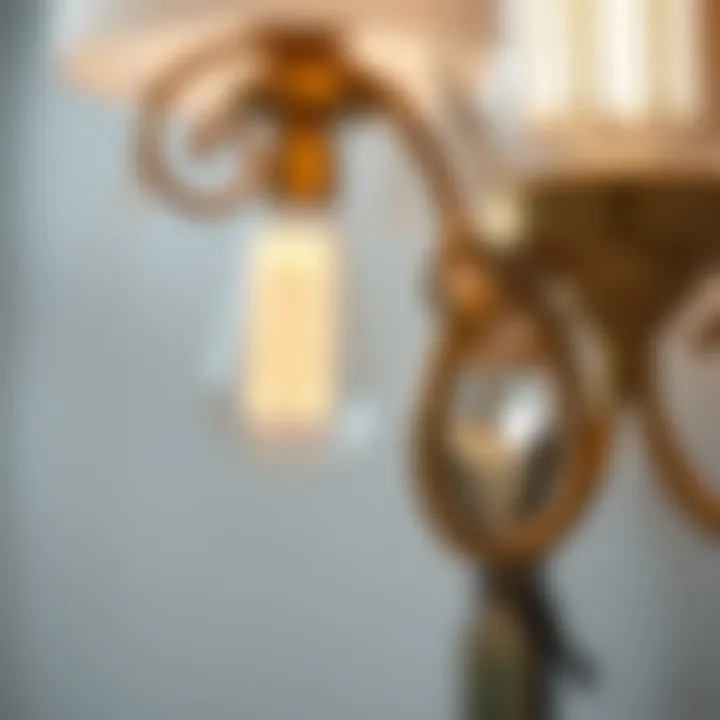
"The right vanity side light fixtures can turn a mundane bathroom into a personal retreat."
In summary, whether it’s wall-mounted, sconce variations, or integrated lighting, each type of fixture plays a vital role in creating an inviting bathroom space.
Functional Considerations
When it comes to vanity side light fixtures, functional considerations are not just an afterthought; they are the backbone of any well-designed bathroom. The right lighting can enhance visibility, influence mood, and even elevate the overall look of the space. A focus on functionality is paramount because it ensures that the lighting is not just a decorative afterpiece but also serves its primary purpose—providing adequate illumination for tasks such as grooming, applying makeup, or shaving.
Several factors come into play when considering functionality, including optimal placement of the fixtures, the types of light bulbs used, and the integration of dimmer switches. Each of these aspects directly impacts how effectively the vanity lighting serves its intended purpose.
Optimal Placement
Height Above Vanity
Selecting the right height for lights above the vanity is crucial for achieving an even and flattering light distribution. The most common recommendation is to install fixtures approximately 65 to 70 inches above the floor. This height allows for uniform lighting over the face, reducing shadows that can complicate tasks like makeup application.
What makes this height popular is its ability to cater to a variety of users, whether tall or short. A well-placed fixture not only provides the necessary brightness but also enhances the overall aesthetic, making the bathroom feel more spacious and inviting. But it’s worth mentioning that if the lights are too high, they can leave the lower part of the face in shadow, making it less effective for personal grooming tasks.
Distance from Mirror
Distance from the mirror is another significant consideration in the lighting design. Generally, lights should be placed roughly 28 to 34 inches apart, flanking either side of the mirror. This spacing promotes even lighting and helps to minimize shadow on the face.
By placing the lights too close together, you risk creating harsh highlights that can distort reflections. On the other hand, placing them too far apart can lead to uneven illumination. The magic lies in finding that sweet spot—just the right distance that allows a soft, even wash of light across the entire area, ensuring that every detail is illuminated accurately.
Light Bulb Types and Brightness
The choice of light bulbs can significantly influence the performance of vanity side light fixtures. There are primarily three types of bulbs that homeowners and designers consider: incandescents, fluorescents, and LEDs. Each type has its list of pros and cons.
- Incandescent Bulbs: While they offer a warm glow that's visually appealing, they are less energy-efficient and have a shorter lifespan.
- Fluorescent Bulbs: Often considered a budget-friendly option, they can provide bright light and are energy-efficient, though some may find their color temperature less appealing for personal grooming.
- LED Bulbs: These are the champions of longevity and energy savings. They come in a variety of color temperatures, which makes it easy to find a tone that fits the vibe of your bathroom.
When selecting bulbs, it's essential to consider the color temperature, measured in Kelvins. A warmer light at the 2700K mark is often preferred for bathrooms, as it mimics natural sunlight, offering a true-to-life reflection.
Dimmer Switch Functionality
Lastly, incorporating dimmer switches into your vanity side light fixtures adds an extra layer of flexibility. Dimmer switches allow homeowners to adjust the brightness according to their needs and mood. Whether you want bright light for a detailed makeup application or a softer glow for a relaxing bath, dimmers offer that versatility.
Moreover, the energy efficiency starts to shine here—when you lower the brightness, you effectively reduce energy consumption, prolonging the lifespan of your bulbs.
In summary, the functional considerations surrounding vanity side light fixtures should be taken to heart in any bathroom remodel or design. By focusing on optimal placement, bulb selection, and incorporating dimmer switches, homeowners and designers alike can ensure that lighting serves both a practical and aesthetic purpose.
Installation Guidelines
When it comes to enhancing the charm and functionality of your bathroom, the installation of vanity side light fixtures cannot be overlooked. This isn’t just about slapping some lights on the wall; it’s about creating the right ambiance while ensuring safety and efficiency. Proper installation can drastically affect the overall aesthetics and usability of the space, serving both as task lighting and as a stylish design element.
Electrical Considerations
Before diving into the installation process, there are some crucial electrical aspects you must ponder over. One of the first considerations is ensuring that you have the appropriate circuit power available to support your new fixtures. Given that bathrooms are often high-moisture environments, you'll want to employ waterproof fixtures and ensure any electrical components are properly rated for damp locations.
- Ensure the breaker is off when working with electrical wiring to avoid any accidents.
- Check the local electrical codes; you might end up needing a licensed electrician if the job exceeds certain complexities.
Another important factor is the type of wiring you should use. Using non-metallic sheathed cable (commonly known as Romex) is typical, but make sure it is rated for wet locations if you're positioned near water sources.
Tools Required
Grab your toolbox because the right tools make all the difference! Here’s a list of essentials you’ll need before you start:
- Screwdriver Set—A Phillips and flathead are standard.
- Wire Strippers—Necessary for exposing wire ends.
- Voltage Tester—Safety first; verify your circuit is dead before getting hands-on.
- Drill—For making holes in the wall if needed.
- Stud Finder—Use this to locate studs for secure mounting.
- Level—To ensure your light fixtures are straight.
- Measuring Tape—Helps with accurate placements.
Other useful options include a utility knife, pliers, and safety goggles. Always remember: safety is paramount, so equip yourself accordingly!
Step-by-Step Installation Process
Now that you’ve got your tools in hand, let's break down the installation into manageable steps:
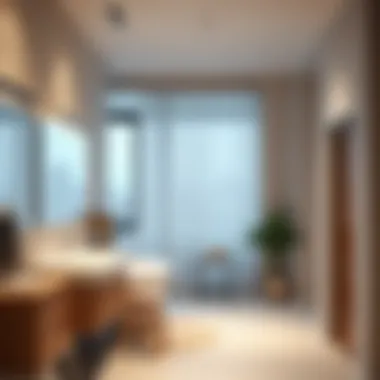
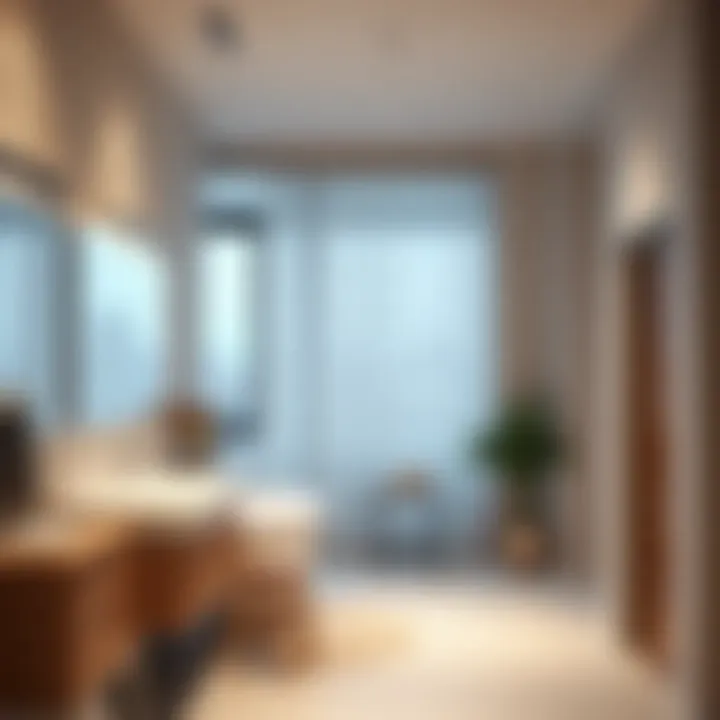
- Turn Off Power: Locate your circuit breaker and switch off the power supply to the bathroom.
- Mark the Installation Height: Depending on the fixture's design, mark where each light will go—typically, the center of the lights should be about 65 to 70 inches from the floor.
- Lay Out Your Wiring: Use your stud finder to locate where the electrical box will be mounted and run your electrical cable through the wall to your light fixture locations.
- Install Electrical Boxes: Securely fasten your electrical boxes into the wall, ensuring they’re flush with the wall surface.
- Wire the Fixtures: Connect the light fixture wiring to the corresponding wiring in the wall. Typically, the black wires connect to black, white to white, and ground to ground (bare or green).
- Mount the Fixtures: With mounting screws and brackets, attach your fixtures, making sure to level them properly as you go.
- Install the Bulbs: Finally, insert the appropriate light bulbs, ensuring you follow any wattage limitations specified by the fixture’s manufacturer.
- Restore Power: Go back to the circuit breaker and turn the power back on.
- Test Your Lights: Flick the switch and verify everything is working as planned!
By following these steps, you not only achieve a functional and well-lit space but also embrace a sense of accomplishment in your DIY skills. Remember—patiently adhere to safety protocols, and if ever in doubt, consult with a professional.
Maintenance and Care
Taking care of vanity side light fixtures is not just about keeping them looking good; it’s also crucial for safety and functionality. Over time, grime and smudges can dull the shine of fixtures, affecting both light output and atmosphere in the space. Neglecting maintenance can lead to accidental bulb failures or worse, electrical hazards. For homeowners and designers alike, understanding maintenance is essential to ensure longevity and reliability.
Regular care can help in retaining aesthetics while improving the overall performance of the lighting. There are key aspects to consider when it comes to maintaining these fixtures, including cleaning techniques and managing bulb replacements.
Cleaning Techniques
Maintaining the brightness in your bathroom is simple with the right cleaning approach. Keeping these fixtures clean not only enhances their look but also ensures maximum light output. Here are some practical cleaning techniques to consider:
- Dusting: It often comes down to the basics, doesn't it? Just a soft cloth or microfiber towel can work wonders for dust accumulation. Make sure to check the fixtures weekly or biweekly, depending on your bathroom’s usage.
- Glass Cleaner: For those glass elements, a streak-free cleaner is a must. You’d want to spray it on the cloth instead of directly on the fixture—just a little trick to keep any moisture from seeping into the wiring.
- Mild Soap Solution: For stubborn spots, mix a few drops of mild dish soap with warm water. Dampen a cloth with this solution to wipe down the fixtures, followed by a rinse with plain water.
- Avoid Abrasives: Sometimes, the shiny surface can tempt one to use abrasive cleaners. Resist the urge! They can scratch and ruin the finish, leading to more maintenance issues down the heart.
It’s also a good idea to turn off the fixtures before you start cleaning to avoid any unpleasant shocks. Remember, cleanliness is not just next to godliness; it's next to functionality!
Identifying and Replacing Bulbs
Choosing the right bulbs can make a significant difference in both ambiance and energy consumption. However, bulbs don’t last forever, and knowing when to replace them is part of responsible upkeep. Here are pointer on identifying and replacing bulbs effectively:
- Flickering Lights: A flickering or dimming light can be a sign that the bulb is nearing its end. If you notice this, consider replacing the bulb sooner rather than later.
- Discoloration: If you see any discoloration around the base of the bulb or in the glass itself, that's a red flag. It might be time to yank it out and pop in a new one.
- Check Wattage: Make sure to replace with a bulb that fits the wattage specifications for the fixture. Exceeding this can cause overheating and damage to both the fixture and the wiring.
- Types of Bulbs: LED bulbs are highly recommended for their longevity and low energy consumption. Incandescent or halogen bulbs may be chosen for their warm color, but they don’t last as long.
Here’s a quick guide on how to safely replace bulbs:
- Turn Off Power: Safety first—always turn off the power at the switch or breaker box before you begin.
- Let it Cool: If the bulb was just used, allow it to cool a bit; hot bulbs can cause burns.
- Remove Carefully: Twist or pull straight down depending on the fixture design.
- Insert New Bulb: Reverse the process with your new bulb, ensuring a snug fit but not overly tight.
- Restore Power: Turn the power back on and enjoy the refreshed light!
By staying ahead on maintenance, you're preventing future issues and ensuring your vanity side light fixtures remain as bright as your future bathroom renovations! For more tips on home improvement and lighting ideas, consider visiting sites like wikiHow or joining discussions on reddit.com/r/HomeImprovement for community advice.
Trends and Innovations
In a world where design and technology intermingle, vanity side light fixtures are no exception to the evolving trends that shape our bathrooms. These innovations are not merely aesthetic; they offer practical benefits that enhance both functionality and ambiance. Understanding these trends is crucial for homeowners and designers aiming to create a bathroom space that is both stylish and efficient.
Smart Lighting Options
The rise of smart lighting has transformed the way we approach home design, especially in spaces like bathrooms where proper lighting is essential. Smart vanity side light fixtures come equipped with features that allow users to control brightness, color, and even the on-off schedule from the convenience of their smartphones. Imagine waking up and asking your virtual assistant to gradually increase the brightness to mimic a sunrise — a gentle way to start the day without the help of harsh, blaring lights.
Benefits of incorporating smart lighting in vanity fixtures include:
- Customization: Users can easily set different light settings for various tasks, say, applying makeup versus relaxing in a bath.
- Energy Efficiency: Many smart fixtures use LED technology, which not only reduces electricity bills but also has a longer lifespan, decreasing the frequency of replacements.
- Ambient Control: It's possible to change the color temperature to match the mood, be it a bright, crisp white for daytime tasks or a warmer hue for nighttime relaxation.
However, it’s worth considering that not all smart fixtures are created equal. Compatibility with existing smart home systems is crucial, and homeowners should check specifications to ensure seamless integration.
"Smart lighting doesn’t just illuminate; it creates environments that feel just right for every moment."
Sustainable Design Practices
As concerns around sustainability heighten, the bathroom lighting arena is not lagging behind. Sustainable design practices are gaining traction, pushing manufacturers to focus not only on reducing energy consumption but also on sourcing eco-friendly materials. This shift is essential as it aligns with the values of a growing number of consumers who prioritize sustainability.
When selecting vanity side light fixtures, consider these sustainable practices:
- Materials: Opt for fixtures made from recyclable or responsibly sourced materials. For example, bamboo or recycled metals can reduce environmental impact while adding a unique aesthetic to the bathroom.
- Energy Efficient Bulbs: Using LED light bulbs instead of traditional incandescents leads to significant reductions in energy usage, which benefits the wallet and the planet.
- Local Sourcing: Choosing locally made fixtures not only supports local economies but also minimizes carbon footprints associated with transportation.
Sustainability isn’t just a trend; it’s becoming a structural part of how consumers make purchasing decisions. By embracing these practices, homeowners can contribute to a healthier planet while elevating their interior space.
Embracing trends in smart lighting and sustainability is vital for creating a modern bathroom that resonates with both functionality and ethical responsibility. As innovations continue to emerge, being informed allows homeowners and designers to make choices that are not only stylish but also responsible.
Ending
In wrapping up this exploration of vanity side light fixtures, it’s paramount to consider their role as not merely sources of illumination but also as pivotal elements of bathroom design. The integration of these fixtures significantly enhances the overall ambiance and functionality of this essential space in a home. With the right choice of vanity lights, one can achieve a blend of practicality and aesthetic appeal, leading to a bathroom that not only looks good but also serves its purpose effectively.
The Role of Vanity Side Light Fixtures in Modern Bathrooms
Vanity side light fixtures occupy a crucial niche in contemporary bathroom design. Their importance is manifold:
- Functionality: These fixtures provide essential lighting that enhances visibility while grooming, which is critical for tasks such as makeup application or shaving. A well-lit mirror can make the difference between a flawless look and a cosmetic disaster.
- Design Cohesion: When selected thoughtfully, vanity lights can tie together various design elements, reinforcing the overarching style of the bathroom. From sleek modern fixtures to ornate vintage designs, the options are practically endless.
- Atmospheric Considerations: The right lighting can entirely change the mood of a bathroom. Warm hues radiating from beautifully crafted sconces can transform a utilitarian space into a soothing retreat, allowing homeowners to unwind after a long day.
- Energy Efficiency: With advancements in technology, many modern fixtures now incorporate LED bulbs or smart technologies, allowing users to save on energy bills while still enjoying excellent lighting.
- Aesthetic Versatility: With countless styles to pick from, vanity side lights can be customized based on individual preferences. Whether you prefer brass finishes or minimalist designs, these fixtures can reflect personal taste and complement existing décor.
"The bathroom is not just a place to wash; it is a sanctuary of personal care and rejuvenation."
Overall, the inclusion of vanity side light fixtures in bathroom design goes beyond mere utility. These light sources play an integral role in crafting a space that is both functional and pleasing to the eyes. As homeowners and designers select these elements, they influence not just the look but also the experience of one of the most personal spaces in the home. Understanding their significance and variety enables more informed decisions, ultimately leading to a more harmonious living environment.















